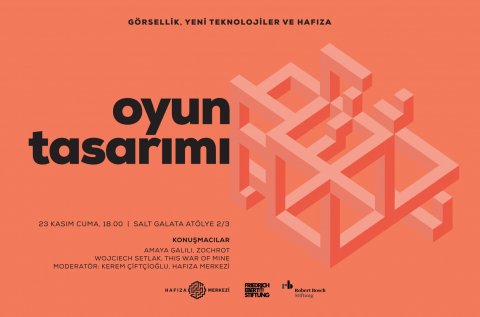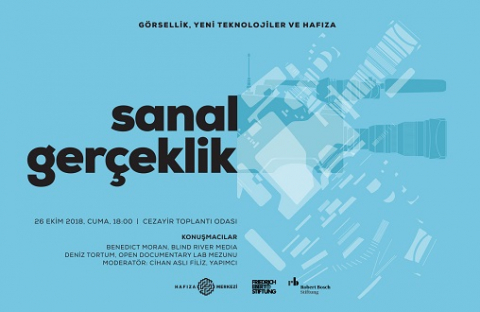
Hackathon by Hafiza Merkezi: How to tell the stories of enforced disappearances
As Hakikat Adalet Hafıza Merkezi (Truth Justice Memory Center), we marked a milestone in our short history by opening up our data-driven work to people from various creative disciplines. This took place in the form of a hackathon-style workshop on February 11, 2017.
Our goal for the workshop was to explore new ideas and formats for sharing our data and findings—formats that resonate with the ways younger generations engage with stories and information. Close to 40 participants from fields such as database design, programming, data visualization, gamification, visual arts, and communications joined the workshop, producing striking and original ideas to help draw public attention to the issue of enforced disappearances.
In the first part of the workshop, we introduced participants to the overall work of Hafıza Merkezi, including our conceptual framework and the structure of our data.
Özgür Sevgi Göral, Program Director of Hafıza Merkezi’s Memory Studies Program, gave a talk on the challenges and ethical questions involved in narrating atrocities. She spoke about the limits of testimony and language in the face of violence, and how this opens space for visual forms of expression. She discussed the concept of responsibility, highlighting the different roles played by state institutions and broader segments of society, and emphasized the importance of connecting the places where atrocities occur to the places where they do not. She argued that atrocities do not only entail physical destruction but also an erasure from the realm of human dignity. She noted that our understanding of “victim” should not be limited to those we instinctively sympathize with, and that remembering must be guided by thoughtful, intentional approaches. Göral concluded her talk by presenting a range of memorialization practices, including victim-centered, perpetrator-centered, and society-centered approaches.
Next, Kerem Çiftçioğlu, Communications and Advocacy Coordinator at Hafıza Merkezi, introduced the center’s data infrastructure and the logic behind its design. His presentation provided insight into the documentation interface and the relationships between different layers of data. He emphasized that the primary aim of Hafıza Merkezi’s documentation work is to demonstrate that enforced disappearances were part of a widespread and systematic state policy—targeting a specific group through identifiable legal, political, and social patterns—and that this framework should guide our visual storytelling goals.
Following the presentations, the creative process began under the facilitation of Erdem Dilbaz from Nerdworking. From noon until 7 p.m., participants worked in teams to develop innovative concepts and prototype ideas. The results were both creative and promising. As Hafıza Merkezi, we will continue to stay in touch with the participants and build on the fruitful ideas that emerged from the workshop.
In the coming days, we will share more about the outcomes and prototypes developed during the event on our website.
We would also like to share with you some of the visualization projects that inspired us to organize this hackathon. And if you have ideas, relevant works, or similar productions you’d like to share with us, we would be happy to hear from you at info@hafiza-merkezi.org.
Visualizing data/Interactive
- Scorched Earth and Chemical Weapons Attacks in Darfur, Amnesty International: Interactive report documenting Sudan Government’s chemical attack on Darfur.
- Case Against M. Al Mahdi, International Criminal Court: Interactive-digital presentation of evidence against war felon M. Al Mahdi.
- Saydnaya Torture Prison: Amnesty International and Forensic Architecture: 3D interactive modeling of the Saydnaya Prison infamous with torture and extrajudicial killings in Syria.
- Where the Bodies are Buried: Mapping Allegations of War Crimes in Afghanistan, The Nation: Interactive report concerning the war crimes committed by the US Army Special Forces Unit Against Afgani civilians in 2012.
- The Fallen of WWII: Interactive documentary examining the human cost of the Second World War
- Türkiye Kültür Varlıkları, , (Turkey’s Cultural Heritage) Hrant Dink Foundation, Interactive map documenting the cultural heritage of the Armenian, Greek, Syriac and Jewish societies in the Anatolian geography.
- The stories of a shared and contested city, Association for Historical Dialogue and Research, A project of Public History concerning the historical summary of Nicosia from 1878 to 1974 in the format of an interactive map.
- Narratives of Displacement and Resistance, Anti-Eviction Mapping Project:Oral history project on evictions administered in San Francisco in an interactive format.
- Faces of Srebrenica, Radio Free Europe & Radio Liberty: A digital remembrance platform with pictures of massacred Bosnian Moslems.
- iNakba, Zochrost:A mobile device application where users can anchor the destroyed Palestinian settlements during the Nakba period and later.
- One Angry Bird, Periscopic: A data visualization showing the emotional curve of the opening statements of 10 US presidents.
- Guesthouse, Merve Bedir and Alican İnal: Sketches and drawing based 3D modeling of the Kumkapı Detention and Removal Center in Kumkapi, Istanbul.
Infographic
- How Gay Marriage Finally Won In The U.S. Supreme Court, The Daily Good: The summary of the changes concerning gay marriages in the US courts and US culture in the past decade.
- Infographic concerning the Responsibility to Protect in Peacekeeping operations, International Coalition for the Responsibility to Protect: Information about the “responsibility to protect” principle in peacekeeping operations.”
- Iraqi War Deaths, The New York Times: Infographic giving information about the attacks that caused the deaths of 2, 592 individuals from the US army, the Iraqi security forces and the Kurdish Peshmerga militia in 2007 New York Times Link.
- The Lives of 10 Famous Painters, Accurat, Giorgia Lupi and Michela Buttignol: Minimalist infographics narrating the biographies of ten famous painters: Pollock, Dali, Matisse, Klimt, Picasso, Mondrian, Klee, Boccioni, Kandinsky, and Miro
- What fish to eat in which season? com: Infographic showing what fish to eat in which season. The Yemek.com link.
- Sulukule Eviction Timeline, Designer Emrah Kavlak, Publisher Sulukule Studio. Timeline diagram of urban gentrification and forced evictions in the Sulukule neighborhood.
- For other examples that we like, click here.
Video
- Act for the Disappeared: Video presentations of the kith and kin of the Lebanese forcefully disappeared.
- Kurzgesagt / In a Nutshell: Animation videos explaining scientific topics from an optimistic nihilist viewpoint.
- RSA Animates:The representation and narration of inspiring ideas via award winning animations.
- School of Life: Brief animated videos concerning the understanding of life and humans inspired by the fields of philosophy, literature, psychotherapy and art.
- A short introduction to the occupation of Palestine: Short animated video on Palestinian history and its occupation.
- Who is that: The museum of forgotten people: Short videos concerning important individuals who lived in the past with anecdotes by a presenter.
- Extra History, Extra Credits: Animation videos on history prepared by the Extra Credits team who works in the area of video games.
Drawings
- Lulz and Leg Irons in the Courtoom with Weev, Molly Crabapple: Drawings from the courtroom proceedings in the trial of the internet activist Andrew “Weev” Auernheimer.
- Sketches from Khalid Sheikh Mohammed’s Trial,
- Molly Crabapple: Sketches from the pre-trial hearing of Khalid Sheikh Mohammed kept in the Guantanamo prison by the US.
- US Ex-Detainees Describe Unreported CIA Torture, Human Rights Watch: sketches from two Tunisian detainees kept in a secret prison and the methods of torture they suffered under the US’s Central Intelligence Agency.
- M.K. Perker Çiziyor, M.K. Perker Draws. BBC Turkish: M.K. Perker’s weekly drawings on the agenda of Turkey and World.
- Escape from Syria - Faiza's Story, Bullion, This animation takes inspiration from the children's drawings and uses the voice-over of their mother Faiza to tell their story.
Street Art/ Mapping
- Video Mapping. Greenpeace: Video mapping reflected onto the Galata Tower to create awareness about nuclear energy
- Video Mapping.UNICEF: Video mapping reflected onto the streets of Sweden to create awareness about immigrant children’s rights.
- Video mapping, Amnesty International:
- Lahey'deki Türkiye büyükelçiliği binası üzerine Türkiye'de tutuklu bulunan gazetecilerin isimleri yansıtıldı ve #WPFD2017 hasghtagi ile paylaşıldı.
- Video mapping. French Designers Studio LeD3: Video of tiger running in the streets of Paris reflected in 3D
- Examples from Stencils, Safa Sosyal
- Roboski stencil on a curtain, Nalan Yırtmaç
- Work on stencil reminiscent of the Roboski massacre, Anonymous
Gamification
- Syrian Journey: Choose your own escape route, BBC: A Scenario of the road map of decisions and choices you would have to make for yourself and your family if you were a Syrian wishing to escape to Europe.
- We Wait – Trailer Link, BBC Link, Aardman Animations and BBC Connected Studios: A virtual reality project on being next to a Syrian family, sharing their hopes and fears, taking you to a shore in Turkey
- This War Of Mine – Trailer Link, Wiki Link, 11 Bit Studios: A computer game with the aim of staying alive, inspired by the siege of Sarajevo during the Bosnian War (1992-1996).
- The Prohibition Game, Association for Civil Rights in Israel: A short animation film inspired by the Wall of Shame built by Israel and its destructive impact on the farmers living on the other side of the border. Inspired by the Farmville game.



